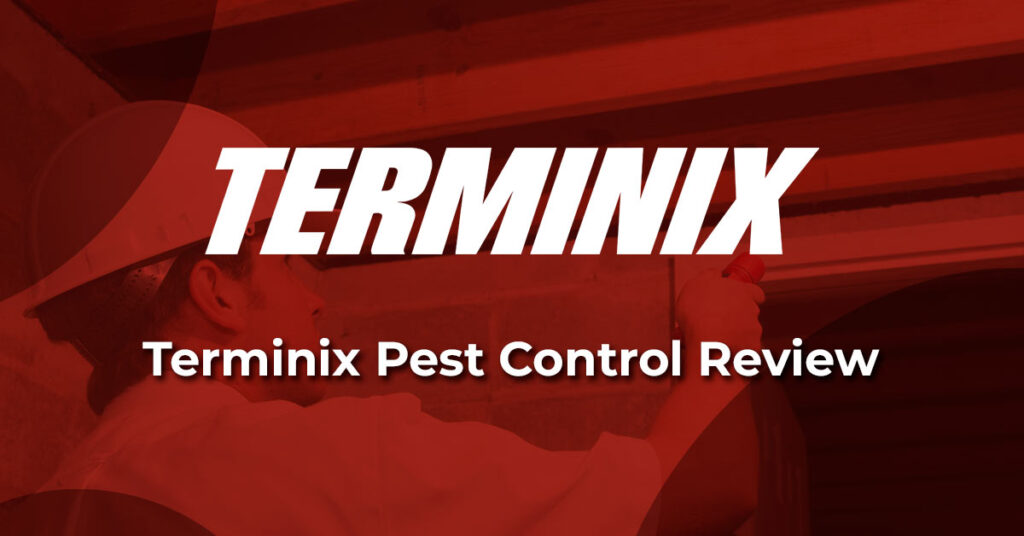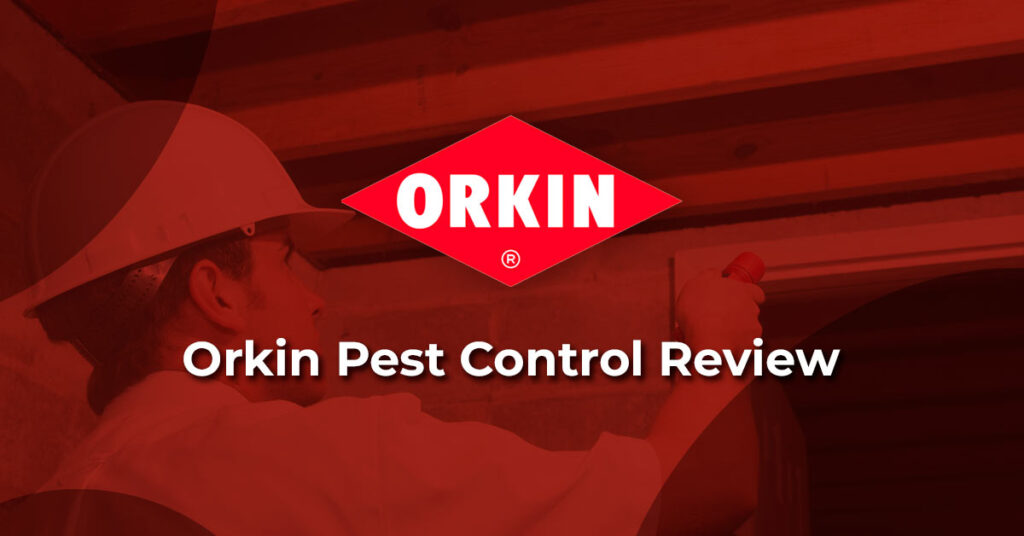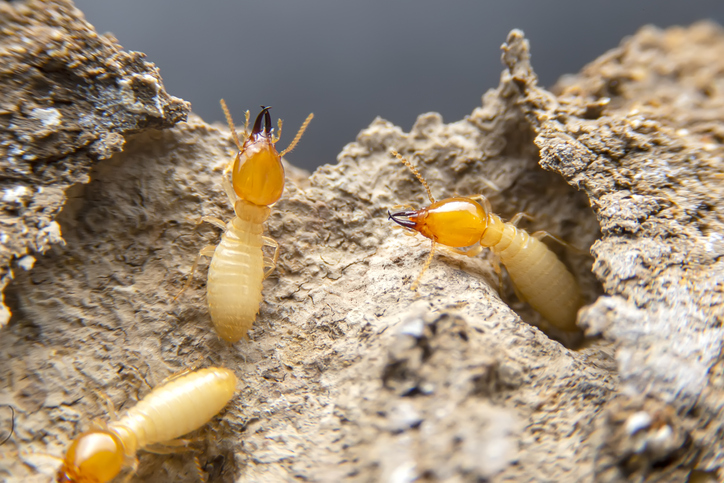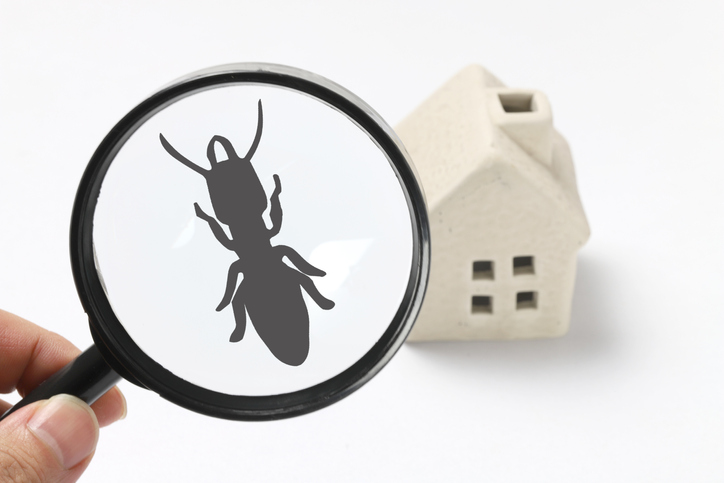Termites can wreak havoc on homes and structures, causing significant damage if left unchecked. If you suspect a termite infestation or want to protect your property from these destructive pests, it’s essential to know how to get rid of termites effectively. By understanding their behavior, employing proper techniques, and seeking professional assistance when necessary, you can successfully eliminate termites and restore peace of mind to your home or building.
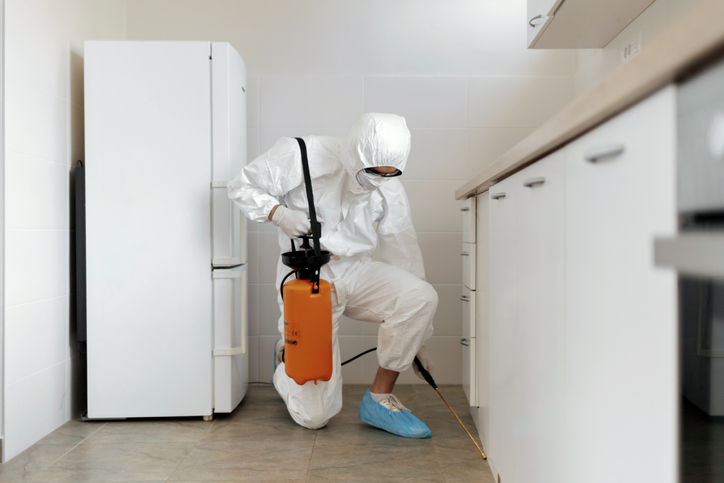
Types Of Termites
Termites are insects that are classified into three primary types based on their living and feeding habits: subterranean, dry wood, and damp wood termites. Subterranean termites live in the soil and are the most destructive, known for creating extensive tunnel systems to access food sources. Drywood termites, as their name suggests, prefer dry wood, like that found in attic spaces. Dampwood termites thrive in damp and decaying wood, making them less common in domestic environments but a potential problem in wet areas.
Termites And Human Interaction
When it comes to human interaction, termites are generally not aggressive or harmful. Unlike some pests, termites do not bite or sting humans. Their primary goal is to chew through wood and other materials high in cellulose. However, while they may not pose a direct physical threat to humans, they can cause significant structural damage to buildings, which can lead to costly repairs if not addressed promptly.
Table of Contents
- Types Of Termites
- Termites And Human Interaction
- Termite Activity Throughout The Year
- How Termites Enter A House
- Identifying A Termite Infestation
- What Are The Common Signs Of Termite Infestation In A Home?
- How To Differentiate Between Termite Swarmers And Flying Ants?
- Consequences Of Termite Infestations
- Termite Control: Professional And DIY Methods
- What Are The Different Termite Treatment Options?
- What Is Termite Tenting?
- How Much Does Termite Treatment Cost?
- Eco-Friendly And Natural Termite Remedies
- Chemical Termite Treatments: Pros And Cons
- Prevention And Long-Term Termite Control
- Conclusion
Termite Activity Throughout The Year
While termites are active year-round, their visibility increases with the arrival of the warmer months, typically from spring through to late summer. This is known as the swarm season when termites, particularly the reproductive members of the colony, venture out to establish new colonies. However, it’s crucial to note that termites can infest and damage homes at any time of year, so vigilance is always necessary.
-
Best Overall
 Save $50 on your first recurring service today with code GET50
Save $50 on your first recurring service today with code GET50 -
Best for Termites
 Save $50 on pest control services with code SAVE50 at checkout
Save $50 on pest control services with code SAVE50 at checkout -
Best for Bed Bugs
 Get a free estimate on pest control services for your home
Get a free estimate on pest control services for your home -
Best for Wildlife Removal
 Call For A Fast & FREE Phone Estimate Today
Call For A Fast & FREE Phone Estimate Today -
Best for Natural Treatment
 Get $100 Off Your Termite Treatment Service
Get $100 Off Your Termite Treatment Service
How Termites Enter A House
Termites are crafty invaders. Subterranean termites, the most common and destructive type, usually enter homes from the soil around or under a structure. They construct mud tubes to traverse exposed areas and reach wood or other cellulose sources. Drywood termites, on the other hand, can directly infest wooden structures and can be introduced through infested furniture or by swarming around windows and doors. A home can be particularly attractive to termites if it has wood in direct contact with the soil, or if it has damp or decaying wood, clogged gutters, or soil-filled porches and patios.
Identifying A Termite Infestation
Termites are elusive pests that often go unnoticed until significant damage has been done. However, there are several signs that can indicate the presence of termites in your home.
Wood Damage
Termites feed on cellulose, which is found in wood and other plant materials. Look for signs of hollowed-out or damaged wood, such as buckling floors, sagging or discolored wood, or wood that sounds hollow when tapped. Mud-like tunnels or galleries may also be visible within the damaged wood.
Mud Tubes
Termites construct mud tubes as protective pathways between their nests and food sources. These tubes are typically brown and made of soil, saliva, and termite excrement. Check along the foundation walls, crawlspaces, or near wooden structures for these pencil-width tubes. Breaking open a mud tube and finding live termites inside confirms an infestation.
Discarded Wings
Termite swarmers, also known as reproductive termites, leave their nests in large numbers to mate and establish new colonies. After swarming, they shed their wings, which can be found near windowsills, doors, or other light sources. Finding piles of discarded wings is a strong indication of termite activity.
Frass or Termite Droppings
Drywood termites produce fecal pellets called frass. These tiny pellets are usually 1 mm long and resemble sawdust or coffee grounds. Accumulations of frass near wooden structures, furniture, or infested areas suggest the presence of termites.
What Are The Common Signs Of Termite Infestation In A Home?
Termites can infest various areas of a home. Here are some common signs specific to different areas.
Subterranean Termite Infestation
Look for mud tubes along foundation walls, in crawlspaces, or in basement areas. Additionally, check for sagging floors, swollen ceilings, and areas of visible termite damage.
Drywood Termite Infestation
Look for small piles of termite droppings (frass) that resemble sawdust near infested wood. Also, inspect wooden furniture, door frames, window sills, or wooden structures for signs of damage.
Attic Infestation
Inspect wooden beams, rafters, and supports for signs of termite damage, such as hollowed-out wood, frass, or mud tubes.
Exterior Signs
Check for mud tubes or termite shelter tubes on exterior walls, fences, or wooden structures attached to the house. Look for swollen, blistered, or discolored wood, as well as wood that sounds hollow when tapped.
How To Differentiate Between Termite Swarmers And Flying Ants?
Differentiating between termite swarmers and flying ants can be challenging, but there are key characteristics to help you distinguish between them.
Body Shape
Termite swarmers have straight bodies without a narrow waist. They resemble small, translucent tubes. Flying ants have constricted waists and bodies divided into distinct segments.
Wing Length and Vein Patterns
Termite swarmers have equal-sized wings that are longer than their bodies. Their wings are clear and have few distinct veins. Flying ants, on the other hand, have wings of different lengths, with the front wings being longer than the hind wings. Their wings have well-defined veins.
Swarm Behavior
Termite swarmers are attracted to light sources and often emerge in large numbers, usually in spring or summer. They are weak fliers and tend to shed their wings quickly after landing. Flying ants may also swarm, but they are generally less numerous, and their swarming activity can occur throughout the year.
Consequences Of Termite Infestations
Termites can cause significant structural damage to a house. These tiny pests feed on cellulose, which is present in wood, and they can devour wooden structures, including beams, support posts, flooring, and even furniture. Over time, as termites tunnel through the wood, they weaken its structural integrity, leading to sagging floors, buckling walls, and compromised foundations. If left untreated, termite infestations can cause severe damage, posing a threat to the overall stability and safety of the affected property.
How Fast Can Termites Infest A House?
The speed at which termites infest a house can vary depending on factors such as termite species, colony size, and environmental conditions. In general, subterranean termites, which are the most common type of termite, can establish infestations relatively quickly. These termites live underground and create mud tubes to access above-ground food sources. They can travel through these tubes and infest a house within a few weeks or months, especially if there is easy access to wood or moisture.
How Long Does It Take For Termites To Cause Significant Damage To A Property?
The timeline for termites to cause significant damage to a property can range from a few months to a couple of years, depending on specific circumstances. Factors such as the size of the termite colony, environmental conditions, and the availability of food sources play a role in determining the speed of damage. In favorable conditions, termites can rapidly cause substantial damage within a matter of months.
As termites are active round-the-clock, their constant feeding and tunneling gradually weaken the structural integrity of a property over time. To minimize the risk of extensive and costly damage, it is crucial to detect termite infestations early and take immediate action. Regular inspections and proactive measures are essential to safeguard the property from the destructive impact of termites.
The Long-Term Effects Of Termite Damage If Left Untreated
If a termite infestation is left untreated, the long-term effects can be devastating. As termites continue to feed and multiply, the structural integrity of the affected property gradually deteriorates. The damage can extend to crucial support beams, floor joists, and other load-bearing elements, compromising the stability of the entire structure. In severe cases, this can lead to structural failure, requiring costly repairs or even rendering the property uninhabitable.
Additionally, untreated termite infestations can lead to secondary issues such as mold growth, as termites create moisture-rich environments. It’s essential to address termite infestations promptly to minimize the long-term consequences.
Can Termites Cause Health Issues For Occupants Of An Infested House?
While termites themselves are not known to directly cause health issues for humans, the presence of termites and their infestation can indirectly contribute to certain health concerns. Termite damage often results in the accumulation of moist conditions, which can lead to mold growth. Exposure to mold spores can cause respiratory problems, allergies, and other health issues, especially for individuals with pre-existing respiratory conditions or weakened immune systems.
The disruption of building materials by termites can release airborne particles, including dust and debris, which may irritate the respiratory system. Therefore, it’s important to address termite infestations promptly to minimize potential health risks.
The Risks Of Ignoring A Termite Problem In A Home
Ignoring a termite problem in a home can have serious consequences. Termites are persistent pests that will continue to cause damage and multiply if left unchecked. By neglecting termite infestations, the structural integrity of the property is compromised, leading to potential safety hazards. The damage can escalate, resulting in costly repairs or even the need for extensive renovations. Moreover, untreated termite infestations can decrease the value of the property, making it more challenging to sell or rent in the future. It’s crucial to take immediate action when signs of a termite problem are detected to avoid further risks and financial burdens associated with untreated termite infestations.
Termite Control: Professional And DIY Methods
When it comes to termite control, there are various approaches available, ranging from seeking professional assistance to implementing do-it-yourself (DIY) methods. Professional termite control offers expertise, specialized treatments, and comprehensive solutions tailored to specific infestations. On the other hand, some individuals may prefer to explore DIY options, which can involve preventive measures or localized treatments. Understanding the pros and cons of each approach is essential for effective termite management. In this section, we will explore the different methods used by professionals and examine the feasibility of DIY solutions in combating termites.
How Do Professionals Treat Termite Infestations?
Professional termite treatment typically involves a comprehensive approach tailored to the specific infestation and property. Professionals conduct a thorough inspection to assess the extent of the infestation and identify termite entry points.
Liquid Termiticides
Professionals apply liquid termiticides to the soil around the foundation, creating a barrier that repels or kills termites upon contact. This treatment method helps protect the structure and prevents termites from entering the building.
Bait Stations
Termite bait stations are strategically placed around the property. They contain cellulose material laced with slow-acting insecticides. Termites feed on the bait and carry the toxic substances back to their colonies, effectively eliminating the entire colony.
Foam Treatments
Foam termiticides are injected into wall voids, crevices, or directly into termite galleries. The foam expands and disperses the insecticide, reaching hidden termite colonies and effectively controlling the infestation.
Wood Treatments
In cases of localized termite infestations, professionals may opt for targeted wood treatments. These treatments involve injecting or treating affected wood with termiticides to eliminate termites and protect the wood from further damage.
What Are The Different Termite Treatment Options?
Termite treatment options vary depending on the type of termite, the severity of the infestation, and the property’s specific requirements.
Soil Treatments
Liquid termiticides are applied to the soil around the foundation or along the perimeter of the property to create a chemical barrier, preventing termites from entering the structure.
Bait Systems
Termite bait stations are installed strategically around the property. Termites are attracted to the bait, consume it, and carry the toxic substance back to their colonies, effectively eliminating the entire colony.
Wood Treatments
Infested wood can be treated with termiticides, either through injection or surface application, to eliminate termites and protect the wood from further damage.
Tenting
In cases of severe infestations, a method called “tenting” or “fumigation” may be used. The structure is covered with a large tent, and a fumigant gas is introduced to eliminate termites throughout the entire building.
What Are The Different Types Of Termite Treatments And Their Pros And Cons?
Different types of termite treatments offer their own advantages and disadvantages. Liquid termiticides create a long-lasting barrier to prevent termite entry, but they may require periodic reapplication. Bait systems are environmentally friendly and can eliminate entire termite colonies, although they require monitoring and time for complete eradication. Wood treatments are effective for localized infestations but may not provide comprehensive protection. Tenting, while highly effective for severe infestations, requires temporary evacuation and careful preparation to avoid exposure to fumigant gas.
Can Termites Be Eradicated Without Professional Assistance?
While it is technically possible to attempt DIY termite control, eradicating termites without professional assistance can be challenging. Termites are highly resilient and can be difficult to eliminate completely without proper knowledge, expertise, and access to specialized products. DIY methods may provide temporary relief but often fail to address the root of the problem or eliminate the entire termite colony. For effective and long-term termite eradication, it is generally recommended to seek professional assistance.
Are There Any DIY Solutions To Get Rid Of Termites?
DIY solutions include removing wood and cellulose materials from direct contact with the ground, fixing plumbing or moisture issues that may attract termites, using termite-resistant materials during construction or renovation, applying chemical repellents or deterrents around potential entry points, and regularly inspecting the property for signs of termites and promptly addressing any issues. While these DIY methods may provide some level of termite control, it’s important to note that they are not guaranteed to eliminate existing infestations or provide complete protection against termites.
Can I Use Vinegar To Kill Termites?
Vinegar is often suggested as a DIY remedy for termite control due to its acidic properties. While vinegar may kill termites on contact, it is not a reliable or effective solution for eliminating a termite infestation. Termites live in colonies, often deep within the structure, and a surface application of vinegar will not reach or eradicate the entire colony.
What Does Borax Do To Termites?
Borax, or sodium borate, is a commonly suggested DIY solution for termite control. When termites come into contact with borax, it can disrupt their digestive system and ultimately lead to their death. However, the effectiveness of borax as a termite control method is limited. It may only provide partial control of termites in specific cases, such as minor infestations, or as a preventive measure.
Can I Use Essential Oils To Repel Termites From My Home?
Essential oils, such as orange oil or neem oil, are sometimes suggested as natural remedies to repel termites. While some essential oils may have repellent properties, they are not proven to be reliable or effective in eliminating termite infestations. The volatile compounds in essential oils may have a limited impact on termites and may not reach or address the root of the problem.
-
Best Overall
 Save $50 on your first recurring service today with code GET50
Save $50 on your first recurring service today with code GET50 -
Best for Termites
 Save $50 on pest control services with code SAVE50 at checkout
Save $50 on pest control services with code SAVE50 at checkout -
Best for Bed Bugs
 Get a free estimate on pest control services for your home
Get a free estimate on pest control services for your home -
Best for Wildlife Removal
 Call For A Fast & FREE Phone Estimate Today
Call For A Fast & FREE Phone Estimate Today -
Best for Natural Treatment
 Get $100 Off Your Termite Treatment Service
Get $100 Off Your Termite Treatment Service
What Is Termite Tenting?
Termite tenting, also known as fumigation, is a treatment method used for severe termite infestations. It involves covering the entire structure with a tent made of impermeable material. Once the structure is sealed, a fumigant gas, such as sulfuryl fluoride, is introduced into the enclosed space. The gas permeates the structure, reaching all areas and effectively eliminating termites and other pests. The process typically takes a few days, during which occupants must vacate the premises. Afterward, the structure is properly ventilated to ensure the safe removal of any residual gas.
How Much Does Termite Treatment Cost?
The cost of termite treatment varies depending on factors such as property size, infestation severity, treatment method, and location. Professional termite treatments typically range from around $500 to several thousand dollars. Tenting or fumigation, which is a more involved process, tends to be one of the higher-priced options. To get an accurate estimate, it is recommended to request quotes from reliable pest control companies. When considering the overall cost, it’s important to factor in the long-term benefits and guarantees provided by each treatment option.
Eco-Friendly And Natural Termite Remedies
What Gets Rid Of Termites Naturally?
Several natural remedies can help deter and control termites to some extent. While natural remedies can provide some level of control, it’s important to note that they may not completely eliminate termite infestations. Natural remedies are typically effective for localized or minor infestations and may not reach deep within the structure or eliminate entire colonies.
Orange Oil
Orange oil contains a compound called d-limonene, which is toxic to termites. Applying orange oil directly to termite-infested areas can kill termites on contact. However, its effectiveness is limited to localized infestations and may not eliminate entire colonies.
Neem Oil
Neem oil is derived from the neem tree and has insecticidal properties. It can disrupt the feeding and molting process of termites, leading to their demise. Neem oil can be applied to infested wood or mixed with water and sprayed around potential entry points.
Diatomaceous Earth
Diatomaceous earth is a fine powder made from fossilized algae. It is abrasive to termites, causing damage to their exoskeleton and ultimately leading to dehydration and death. Diatomaceous earth can be sprinkled around infested areas or along termite trails.
Beneficial Nematodes
Beneficial nematodes are microscopic worms that parasitize and kill termites. These nematodes can be introduced into the soil around termite colonies or infested areas. They infect termites with bacteria, effectively eliminating them.
Are There Any Eco-Friendly Options For Termite Control?
Yes, there are eco-friendly options available for termite control that minimize environmental impact. When opting for eco-friendly termite control, it is important to work with reputable pest control companies that specialize in environmentally conscious practices. They can provide customized solutions that are effective in termite management while minimizing harm to the ecosystem.
Borate-Based Treatments
Borate-based treatments are low-toxicity products that are effective against termites. These treatments can be applied to wood surfaces, creating a protective barrier that termites cannot penetrate. Borates are relatively safe for humans and pets but can be toxic to termites.
Physical Barriers
Physical barriers, such as stainless steel mesh or sand barriers, can be installed during construction to prevent termite entry. These barriers create a deterrent and block termites from accessing the structure.
Heat Treatments
Heat treatments involve raising the temperature in the infested area to a level that is lethal to termites. This eco-friendly method eliminates termites without the use of chemicals. However, heat treatments require specialized equipment and professional expertise.
Termite Bait Systems
Termite bait systems, using non-toxic materials, are an eco-friendly alternative to traditional chemical treatments. These systems rely on bait stations containing substances that are attractive to termites. The termites feed on the bait and carry it back to the colony, effectively eliminating the entire colony over time.
Chemical Termite Treatments: Pros And Cons
Several chemical treatments are available to help keep termites away from your property. These include termiticides, which are specifically designed to target and eliminate termites. Common termiticides contain active ingredients such as imidacloprid, fipronil, or bifenthrin. These chemicals can be sprayed directly onto infested areas, applied as a barrier around the structure’s foundation, or injected into the soil to create a protective zone. These treatments work by either repelling termites or killing them upon contact or ingestion.
What Are The Benefits And Drawbacks Of Using Chemical Treatments For Termites?
Chemical treatments for termites offer several benefits. They are highly effective in eliminating termite infestations, including both localized and extensive colonies. Chemical termiticides can provide long-lasting protection when applied correctly, creating a barrier that termites cannot easily penetrate. They can be applied as a preventive measure during construction or as a remedial treatment for existing infestations. Moreover, chemical treatments are often readily available and can be applied by homeowners or pest control professionals.
However, there are also some drawbacks to consider. Chemical treatments typically involve the use of synthetic pesticides, which may raise concerns about their impact on the environment and human health. Some termiticides can be toxic to beneficial insects, animals, or aquatic life if misused or applied improperly. Additionally, chemical treatments may require repeated applications to maintain their effectiveness, which can increase the cost and potential exposure to pesticides. It is crucial to carefully follow the instructions and safety guidelines provided by the manufacturer or seek professional assistance to ensure the proper use of chemical treatments.
Prevention And Long-Term Termite Control
To avoid termite infestations, homeowners can implement several preventive measures. Regular inspections should be conducted to detect early signs of termite activity such as mud tubes, discarded wings, or damaged wood. Addressing moisture issues by fixing leaks, improving drainage, and ensuring proper ventilation can make the property less attractive to termites, as they are drawn to moisture.
Keeping firewood, lumber, and wooden debris stored away from the home’s foundation reduces termites’ access to potential food sources. Trimming vegetation, including bushes, trees, and shrubs, prevents them from touching the home’s exterior, eliminating potential entry points for termites. Lastly, sealing cracks or gaps in the foundation, walls, or windows acts as a barrier to prevent termites from infiltrating the property. By implementing these preventive measures, homeowners can significantly reduce the risk of termite infestations.
Are There Any Specific Building Materials That Are Less Susceptible To Termite Damage?
While no building material is entirely immune to termite damage, some are naturally more resistant. For example, concrete, steel, and brick are less susceptible to termite attacks compared to wood. Additionally, certain types of treated lumber, such as pressure-treated wood, can provide increased resistance to termites. Using termite-resistant building materials and incorporating physical barriers during construction can help reduce the risk of termite infestations.
How Do You Permanently Kill Termites?
Permanently killing termites typically requires professional treatment. The most effective methods for termite eradication are chemical treatments, such as termiticides, that are specifically designed to target and eliminate termites. These treatments can be applied as a barrier around the foundation of the structure or injected directly into the infested areas. Professional pest control experts have the knowledge, expertise, and access to specialized equipment necessary to ensure effective termite elimination.
Can Termites Come Back After Treatment?
While proper treatment can eliminate active termite infestations, it is still possible for termites to return. Termites can enter a property from neighboring areas, or a new infestation can occur if conducive conditions are present. Regular inspections, ongoing preventive measures, and prompt action in case of any signs of termite activity are crucial to reducing the risk of re-infestation.
Can A House With Termites Be Saved?
In most cases, a house with termites can be saved through professional treatment and appropriate measures. However, the extent of the termite damage and the length of time the infestation has been present can affect the structural integrity of the building. It is essential to act promptly and seek professional assistance to assess the situation and determine the most suitable treatment options. In severe cases, extensive repairs and structural reinforcements may be necessary to restore the integrity of the house.
Conclusion
Getting rid of termites requires a comprehensive approach that combines identification, treatment, prevention, and long-term control strategies. By being vigilant and recognizing the signs of termite infestations, homeowners can take swift action to address the problem. Seeking professional assistance for effective termite treatment is often recommended, as experts have the knowledge and tools to eliminate termites efficiently. Remember, early detection and proactive measures are key to effectively getting rid of termites and protecting your home from their destructive impact.


